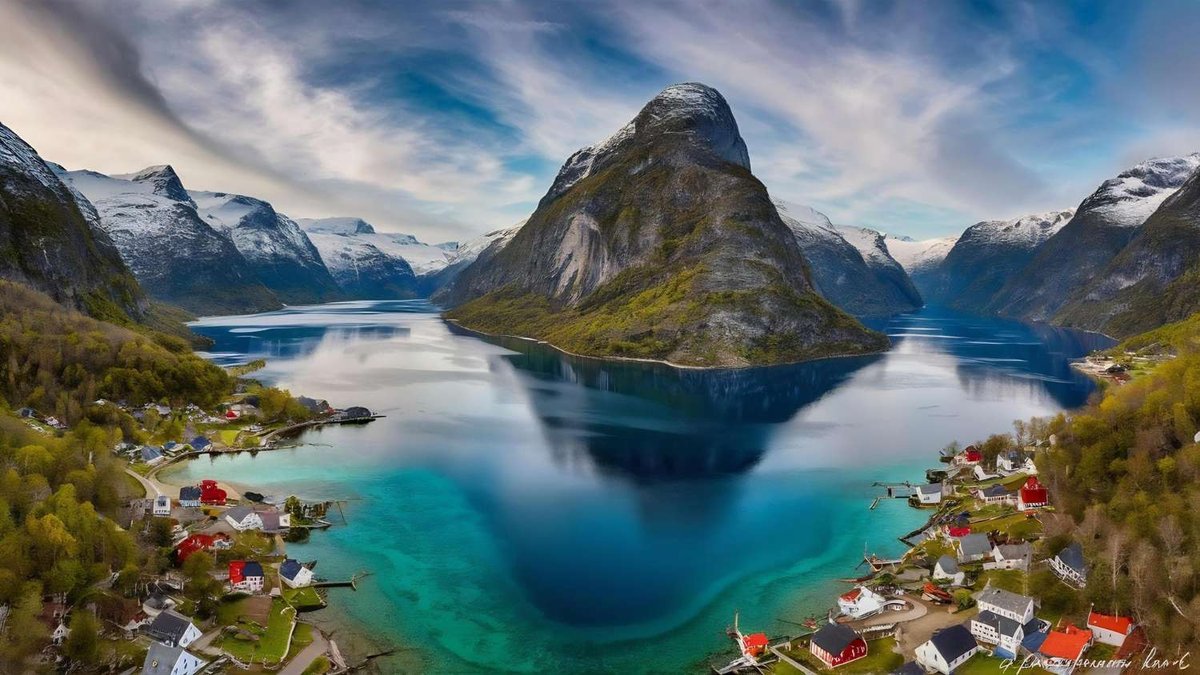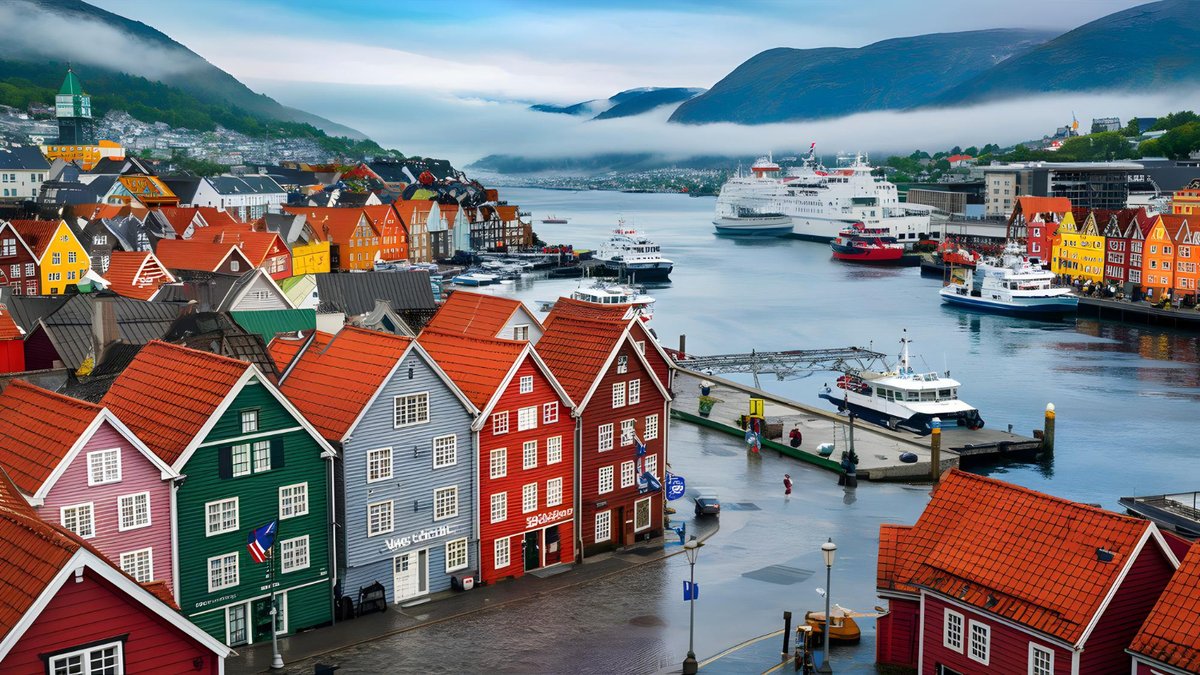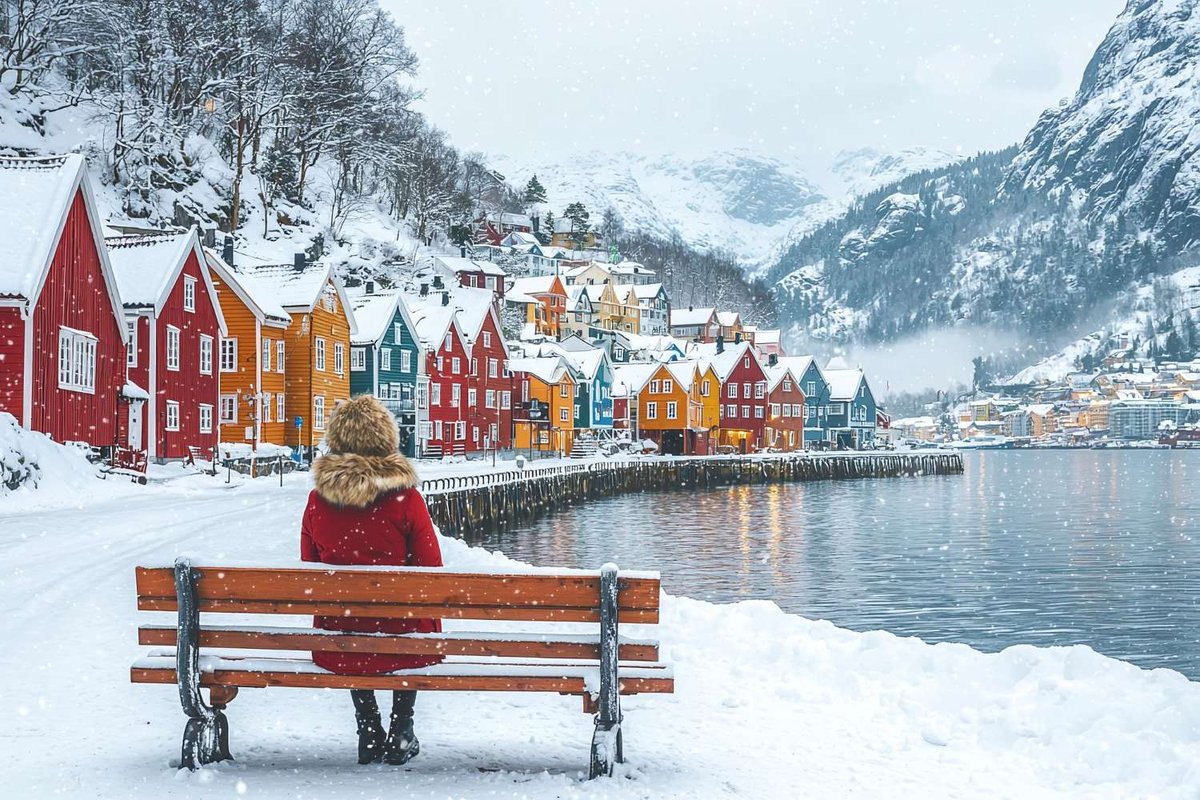📦 Fjords + mountains + cities: how to “pack” three Norwegias into one trip
Most tourists visit more than one attraction in Norway. They want to smell the salty wind in the fjords, feel the adrenaline rush of mountain trails and experience the atmosphere of Scandinavian cities with their coffee, design and museums. You can fit all of this into a week and a half if you plan your route so that you visit three different places. Below are ten detailed FAQ answers, each one is between 110 and 130 words long. In the text, we talk about the sections 'Fjords and cruises', 'Transport, roads, car rental', 'Nature, national parks and activities', 'City guides' and other categories of the blog. Check them out for more information.

❓10 Frequently asked questions
1. How can I plan a route that is both direct and circular, so I don't have to go out of my way?
Start and end your trip in Oslo, where you'll find the cheapest flights.
Day 1: Travel from Bergen Railway to Geilo, then catch a bus to Flåm. On the second day, you will go on a cruise on the Nærøyfjord and then travel to Bergen. On the third day, we visited Bryggen City Museum and took the Fløyen funicular. Day 4 — we rented a car and drove to Trollstigen road, then spent the night in Åndalsnes. Day 5 — hike the Besseggen trail in Jotunheimen. On the sixth day, we will travel to Trondheim through the Gudbrandsdalen valley. Day 7 — I will visit Nidaros Cathedral and then fly back to Oslo with Widerøe. This 'circle' reduces repetition and combines city and nature. You can find route maps, ferry schedules and vehicle permits in the 'Transport, roads, car rental' category. The 'Weather and seasons' category discusses the best time to visit each region based on the weather.
2. How many days should we spend at each place, and why?
For a beginner, the best mix is 30% cities, 40% nature and 30% fjords. Cities are necessary for 'cultural recharging' and for getting around; one full day is usually enough for Oslo or Bergen. Fjords are the most unpredictable in terms of weather and ferry schedules, so you need at least two days to allow for fog. Mountains require even more flexibility: the Besseggen or Preikestolen trail takes a whole day and depends on the wind forecast. If you're on a short break, try to find time to visit cities rather than nature — you can enjoy some of the best coffee in Scandinavia at the airport. If you need a detailed budget or timetable, look at the 'Planning & Budget' section. For a list of city festivals, go to the 'Events & Festivals' section.
3. Which transport links will save you time and money?
It's better to take the train, bus and ferry than to rent a car for the whole trip. You save money by not having to pay for a hotel, the bus goes straight to the cruise ship pier in Flåm and you don't have to drive for two hours on windy roads.
A flight between Trondheim and Oslo costs less than petrol and toll roads. If you really need a car, rent one for a specific route, like from Bergen to Åndalsnes, and then return it and take the train. Hertz One-Way often offers a service where they will move your car to another location for €1 per day. If you want to know about car insurance, petrol prices and so on, have a look at the 'Transport, roads, car rental' section. For tips on saving money on ferry tickets, check out the 'Budget life hacks' section.
4. When is the best time to see the fjords without rain, the mountains without snow, and the cities with festivals?
The most important time is the second half of June and the first two weeks of July. By this time, most of the snow on Preikestolen and Besseggen has melted, but the glaciers are still blue. The west coast has the fewest rainy days of the year, and Bergen hosts an international music festival. The first part of the Norwegian Opera Tour is in Oslo, which makes it more cultural. However, prices are also at their highest, so book 6–8 months in advance. You can compare average yearly rain and daylight hours in our 'Weather and Seasons' section; a selection of upcoming national holidays can be found in the 'Culture, History and Traditions' tab.
5. Which cities are best connected to the surrounding nature?
Bergen is an hour's drive from the Hardanger fjords, and the Fløyen funicular takes you straight to the forest trails. Alesund is the perfect place to stay if you want to visit the Trollstigen and Geirangerfjord routes. It is in the middle of the fjords, so you can see both the sea and the mountains in one day. Tromsø is a city with an Arctic feel, located in the Ljung mountains, where you can also see the Northern Lights. Each city has its own article in the City Guides section, and the available tracks around them and their difficulty levels are described in Nature, National Parks and Active Recreation.

6. How can you pack a suitcase that is suitable for both city and country trips, as well as trips to the mountains?
The base layer is a waterproof jacket and soft trousers: they protect you equally well from sea spray and strong winds. Mid-weight trekking boots are perfect for walking on cobblestones in Bergen and stone steps in Besseggen.
The only 'city' item in your suitcase should be a Dale of Norway wool sweater — it will keep you warm in a ferry cabin at +10°C and look good in photos. Instead of an umbrella, take a small poncho raincoat; you can fit a backpack with a camera underneath it. Read our list of essential layers, which we have tested in the fjords, in 'Useful tips for travellers'. You can also find prices for branded clothing and compare tax free prices in 'Shopping and souvenirs'.
7. How should you divide your budget between the cruise, mountain activities and 'city' expenses?
On average, a mid-range traveller spends 35% of their budget on accommodation, 25% on transport, 20% on food, 12% on activities and 8% on souvenirs. A cruise on the Nærøyfjord (480 NOK) costs more than a bus transfer, but you get two nights' accommodation and some great photos. The most expensive day is the Trolltunga hike, which costs 750 NOK for a shuttle and parking. In cities, you can save money on lunch with 'dagens meny' lunch sets and spend your spare cash on museums. The Oslo Pass is worth it after three or four visits. You can find detailed calculators and spending tables under the 'Expense Calculators' tab. For food life hacks based on supermarket prices, look in the 'Kitchen and Gastronomy' section.
8. What should you book in advance to avoid queues?
Buy tickets for the Flåmsbana and the Nærøyfjord cruise 90 days in advance: summer cruises sell out quickly. Preikestolen lets you pay for parking online, saving 30 minutes in the morning. Get an AutoPASS electronic pass for the Trollstigen road, otherwise you may have to wait five hours to descend. Buy your Museokortet in Bergen online and simply show the QR code. Book DNT mountain huts for July and August when you make your booking. For links and deadlines, look at the 'Accommodation and lodging' section, under 'Rorbu cabins and campsites'. For information on city museums, look at the 'Culture, history and traditions' section, under 'Museums'.
9. How can the route be changed to suit families, elderly tourists or people with disabilities?
Instead of hiking, take the funicular to Fløyen, where you can enjoy a 3 km trail with great views. The Geiranger-Hellesylt ferry is wheelchair accessible and has a warm lounge. Hurtigruten's cabins have wide doors and lifts. In Oslo, most museums have ramps, and trams are low-floor. We put this information together in the categories 'Safety, sustainable tourism and accessibility' and 'Nature, national parks and active recreation → Routes through national parks'.
10. Which ‘must-see’ photo spots reflect three faces of Norway at once?
- Stegastein Viewpoint: a glass bridge 650 metres above the Aurland Fjord, combining water and mountains in one frame.
- Ulriken 643: the top of the cable car shows the roofs of Bergen and the ocean horizon.
- Storseisund Bridge on the Atlantic Road: a dramatic curve over the stormy sea, just an hour's drive from the Trollstigen waterfall in the background.
- Reinebringen: view of the village of Reine and the saw-tooth peaks of Lofoten.
- Oslo Opera House: ultra-modern architecture against a fjord landscape.
- For GPS coordinates and tips on lighting/drones, see ‘Fjords and Cruises’ and ‘City Guides’.

The combination of fjords, mountains and cities makes a trip to Norway feel like a movie that is constantly full of activity. During the day, you can feel the icy water with your sleeve, in the evening you can taste local cider under the stone roof of a fisherman's warehouse, and at night you can fall asleep to the sound of the Arctic surf. Smooth transitions between natural and urban scenes save time and money, and allow you to focus on being amazed. Use our route maps, cost tables and booking tips to create your own mix of northern experiences: a dash of adrenaline, a dash of beauty and a pinch of Europe's purest nature.





1 comment
Log in to leave a comment